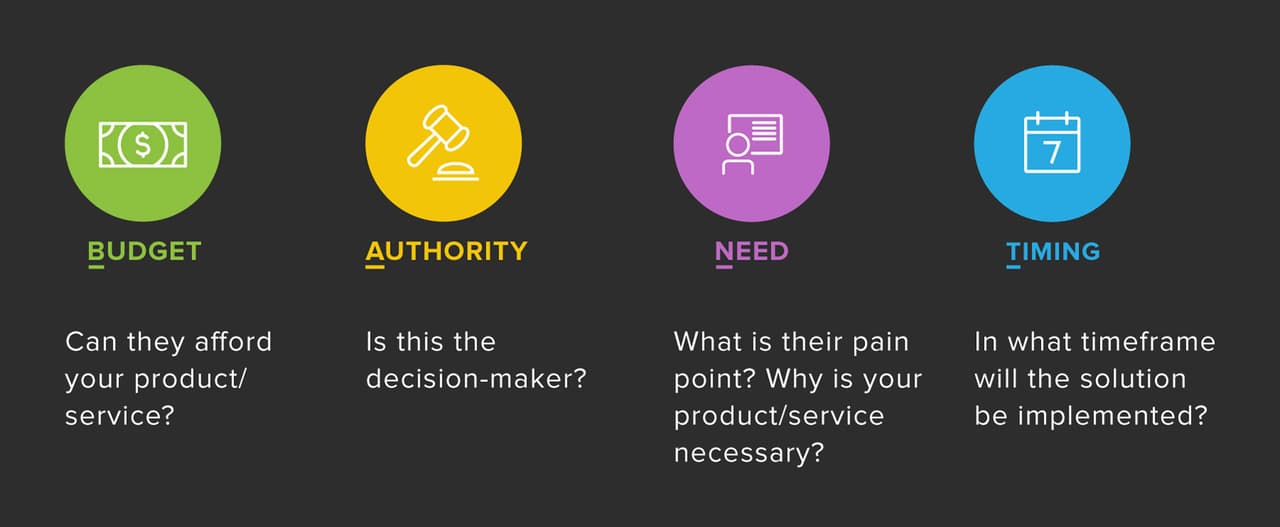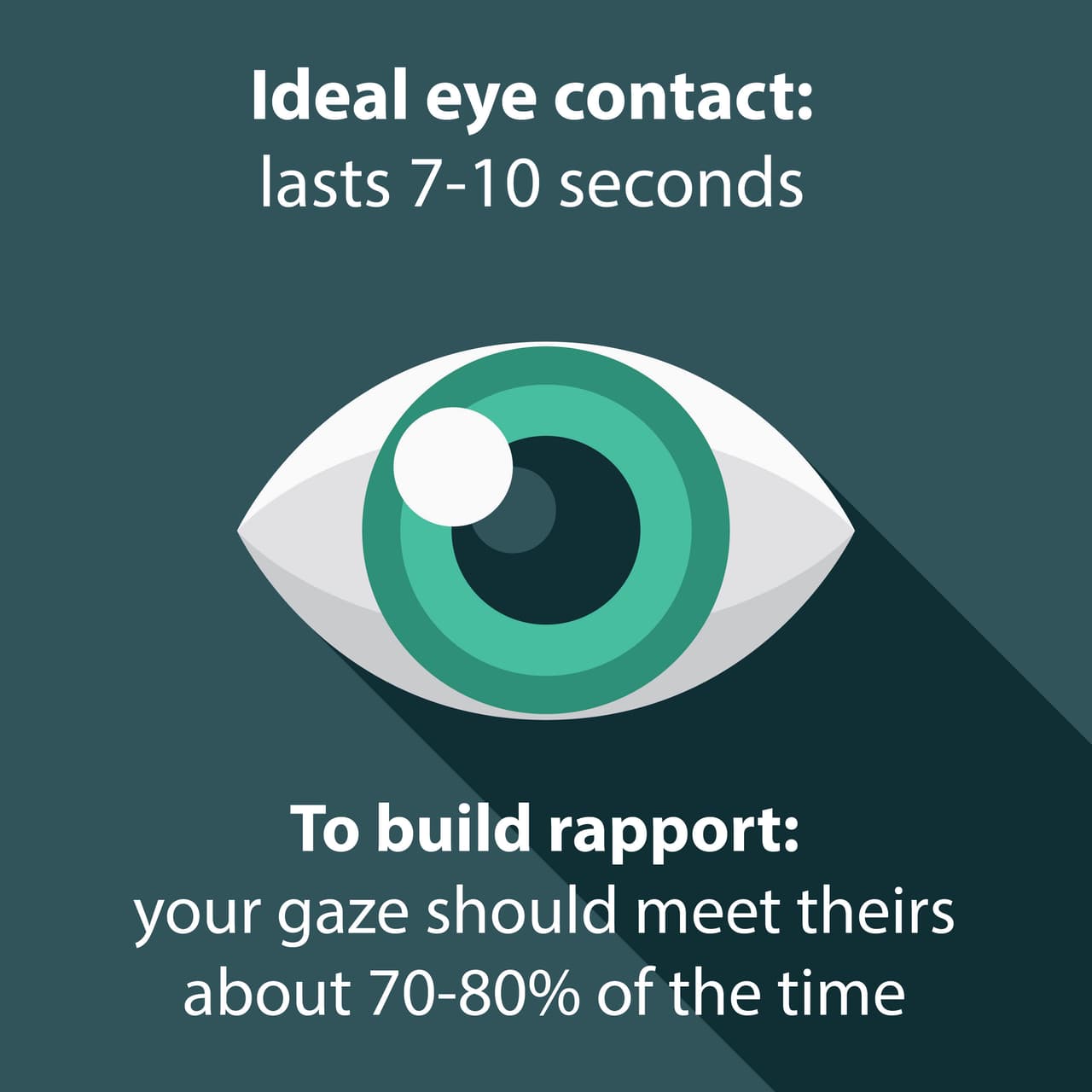How to Get Prospects to Stop Seeing You as Pushy (With Examples)
Jenny Keohane
Ah, the stereotypical salesperson: pushy and aggressive.
By now most salespeople know that this tactic does not work, right? The problem is many don’t even realize that they’re being pushy in the first place.
Studies show there is a disconnect between how salespeople think they’re presenting themselves and how prospects view them: just 17% of salespeople think they’re pushy — compared to 50% of prospects.
We know what you’re thinking: salespeople need to convince a prospect to buy their product or service and persistently follow up, so how do you avoid sounding pushy?
Our solution: change yourself into a trusted advisor rather than a straight seller. Here are some of our top tips for doing so.
6 Ways to Ensure You Don’t Come off Pushy to Prospects
1. First and Foremost: Pre-Qualify Your Prospect
The first thing you can do to avoid being a pushy salesperson is to find prospects who need your product or service. If you’re convincing them to want your product or service or forcing a need on them, you’re being that salesperson.
First, do your preliminary research. Understand the industry and whether this prospect fits your buyer personas, i.e. company size, industry, behaviors. Then, ask them questions that will reveal their business problem and whether your product or service can help.
If you’re aiming for the right people, the selling process will be much more authentic. And if it’s the right fit, you won’t need to sound pushy because your prospect will be getting genuine value out of your product or service.
Tip: Use the sales acronym BANT — a formula used to determine whether it’s the right time to sell to a prospect.

Formula to qualify prospects: Discovery Call Formula (Checklist & Questions).
2. Let Your Prospect Do the Talking
Have you ever heard the phrase “people love talking about themselves.” Well, it’s true. Get your prospects talking about themselves and they’ll look back on the conversation in a more positive light. Also, how can you come off as pushy if they’re the ones doing the talking?
This strategy is a win-win. This will make it much easier for you to understand your prospect and ultimately decide if they’re the right fit for your product or service. And they are the right fit — you have plenty of context to back up why you think so.
How do you get your prospect to talk about themselves? Ask them open-ended sales questions.
Here are 5 examples that’ll get your prospect talking:
- “What’s working and not working with your current process?”
- “What are some of the specific things holding your team back from reaching your goals?”
- “What challenges have you run into with other solutions you’ve tried?”
- “What is your boss hoping to accomplish in the next year?”
- “What are your concerns about making this change?”
3. Never Start the Conversation About Your Product
We get this is hard to do considering that’s why you’re getting in touch with this person in the first place — to sell your product. But our tip is to begin your conversation by asking them questions about themselves and avoid discussing your product just yet.
Our main tip for doing this:
Ask your prospect if certain challenges or obstacles in the industry affect their business. If your prospect has any of your proposed issues, then your product or service will only offer solutions to their problems. Then when you bring up your product or service, it’s more about them and not you.
You are offering them value and offering solutions to their current problems – avoiding all signs of a pushy salesperson. And if the answer is no – it’s not a good fit and you’ll save both of you time by not following through.
Here’s a follow-up email template for making it about them:
Hi {!First Name},
It was nice to meet you at {!Occasion where you met}. I loved learning more about {!Something discussed}. I’m really interested to hear more about your role as {!Job title} at {!Company}, as {!Reason why you’re interested}.
If you have time in the coming weeks, let’s {!Follow up action}. I’m generally free on {!Days of the week}, if that works for you?
Looking forward to keeping in touch!
Tip: Check out our new and improved inside sales strategy guide.
4. Make It Known That You’re Listening
The best way to gain their trust is to listen attentively but also make it known that you’re listening. You can do this by directly addressing the issues they discuss and asking them questions about their previous statement. This way you never let them doubt whether you were listening.
This may sound generic, but it is key to not coming off as pushy and portraying that you are a trustworthy advisor. When you try to communicate the value of your product, the best way to do this is by referring to statements they made to back it up.
If your conversation takes place in person, watch your nonverbal cues. Make eye contact with them as much as possible. Studies show that your gaze should meet theirs about 70-80% of the time.

5. Position Yourself as a Credible Source
To be a trusted advisor — you need to establish yourself as a credible source. You can do this by offering solutions that will make their lives easier. Use your industry expertise and offer guidance.
Humans naturally fear the unknown. Psychology research suggests humans like the ability to anticipate the consequences of situations. A tip for overcoming this barrier: mention a similar business you’ve worked with and guide them through the process, mention any obstacles, and provide hard data.
Make your prospect feel comfortable and establish yourself as an authoritative figure. Offer your expertise and help reduce any fears.
Here’s an email template for doing so:
Hi {!First Name},
The last few calls I’ve had with companies like yours who {!specific stats about the recipient’s company} have let me to research {!topic that could be a pain point for them}.
I thought you would appreciate a couple of articles on building on those strategies:
{!Link to content 1} – {!type of content}
{!Link to content 2} – {!type of content}
{!Link to content 3} – {!type of content}
If those resonated with you, let’s grab 15 minutes so I can set you up with a free trial of {!product} and see if it can be a fit for {!specific pain point shared by companies like you} – {!link to calendar}.
Thanks!
6. Let Them Decide the Future Steps
Give your prospect the freedom to decide the next steps. When you let your prospect make this decision – you’re perceived more as an advisor than a salesperson.
Some questions include:
- “Does that make sense?”
- “Is this something you’d be interested in?”
- “What direction would you like to go from here?”
- “How would you like to continue this process?”
Conclusion
Remember, you could be presenting yourself in a pushy manner without realizing it.
Remind yourself of these tips before your next conversation with a prospect. If you act as an advisor and put them first, your product or service will sell much easier.
Get sales tips and strategies delivered straight to your inbox.
Yesware will help you generate more sales right from your inbox. Try our Outlook add-on or Gmail Chrome extension for free, forever!
Related Articles
Melissa Williams
Melissa Williams
Casey O'Connor
Sales, deal management, and communication tips for your inbox


